How to Stop Erosion in Your Yard: 7 Expert Tips
-
Pete Ortiz
- Last updated:
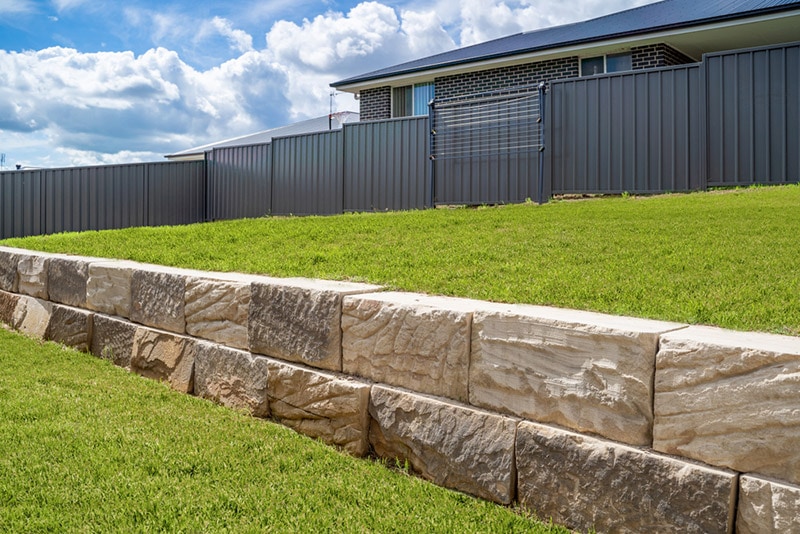
Time and the elements have a way of shifting the landscape (and our landscaping) whether we like it or not. Erosion is inevitable as water runoff, wind, and human activity pound away at vulnerable parts of the yard. When we lose the valuable topsoil around our property, our gardens lose critical nutrients, and if water begins flowing or flooding in the wrong places, foundations may suffer.
Employing thoughtful preventative measures at home is environmentally friendly and beneficial for the integrity of your property. Let’s explore seven easy ways to stop erosion in your yard.
The 7 Tips to Stop Erosion in Your Yard
1. Native Plants and Rain Gardens

Rain gardens are a beautiful and beneficial addition to water-filled, downward-sloping patches of the yard. Deep-rooted native plants maintain the soil structure while sucking up excess water coming from gutters and spouts before it can flood your property or run to nearby waterways and drains.
Sitting in a low-lying area, your rain garden should sit at least 10 feet from your foundation to prevent water from coming back into your home. Using river stones will block and direct water flow while adding another aesthetic layer to the garden.
An ideal combination of grading, soil blend, and layout will allow the garden to absorb water in roughly 24 hours. Drainage is critical to prevent standing water from damaging plants and attracting pests.
2. Grass
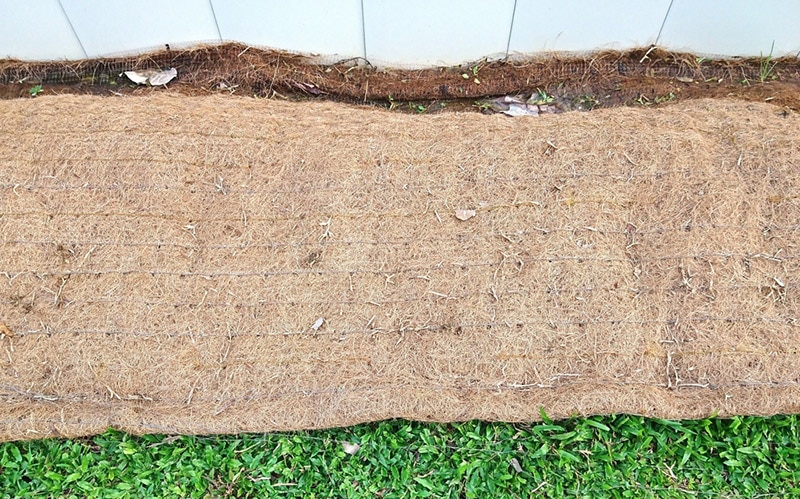
Grass seed and sod are excellent options for slight slopes with uncovered soil prone to erosion. Overseeding the yard where grass grows is also effective in fortifying the soil stability with more roots.
Cut from the top layer of soil, sod rolls out easily in place and provides instant protection from wind and rain. If grown from seed, protecting grass as it takes root is essential. An erosion control blanket made of biodegradable mesh can keep the soil in place for several months to allow the grass to take hold. You can also use these blankets elsewhere to prevent runoff and soil degradation for other plantings.
3. Ground Cover and Trees
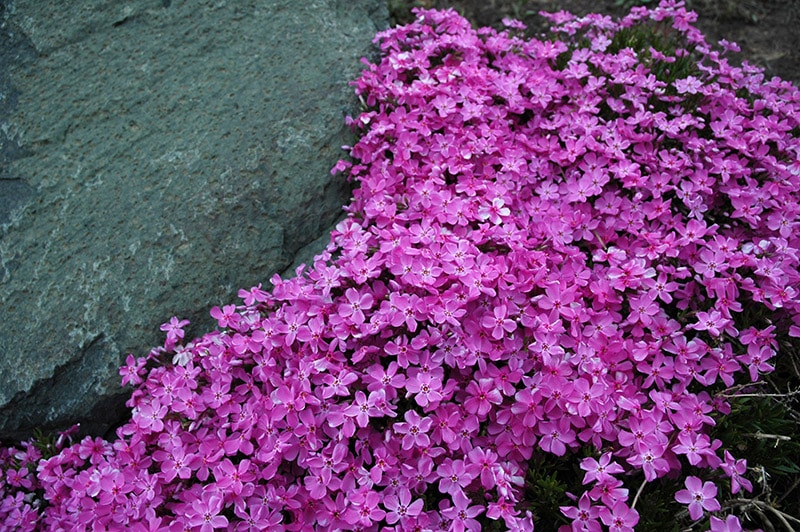
Ground cover plants are low-lying decorative plants that stabilize soil with their roots and block out rain, wind, and ice. Popular ground covers for erosion control include:
- Creeping phlox
- Periwinkle
- Spotted dead nettle
- Japanese spurge
Trees and bushes offer equally effective alternatives. Their deep root systems grip the soil and give water paths to follow through the ground. Meanwhile, the canopies shield the soil below, dispersing rainfall before it can drown sections of the yard.
4. Mulch
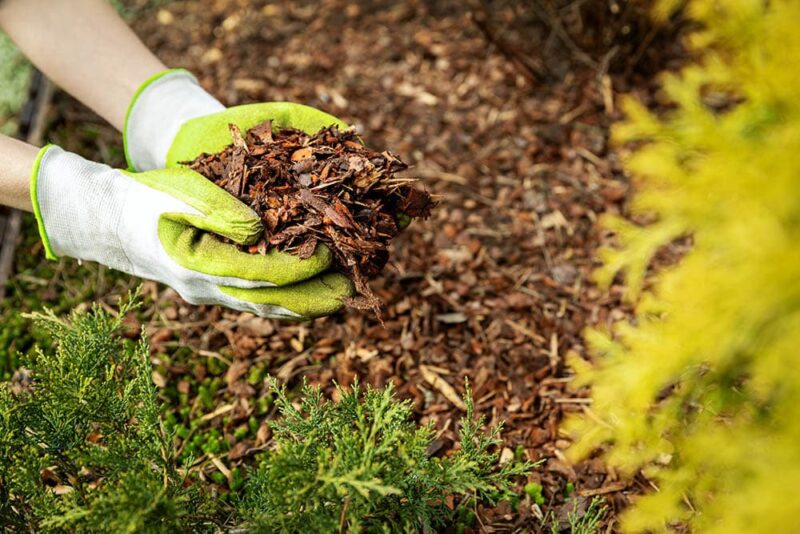
Like blankets, mulch is an excellent temporary control while establishing plants, but again, it works well enough by itself. Mulch from grass, wood chips, gravel, or straw can provide much-needed cover and soil stabilization. For soil-stabilizing plants and rain gardens, mulch delivers essential nutrients, controls moisture, and maintains the soil temperature.
Because it easily shifts, mulch is only practical on gentle slopes where runoff won’t carry it away. Netting may be necessary to prevent wind from tossing it around.
As an alternative, hydro mulching combines mulch with water, seed, and a tackifier to create a mat. The moistened mulch supplies a firmer hold and improved erosion control. By holding soil in place and retaining water, grass seeds can more effectively take root in an even spread across an area.
5. Dry Creek Bed
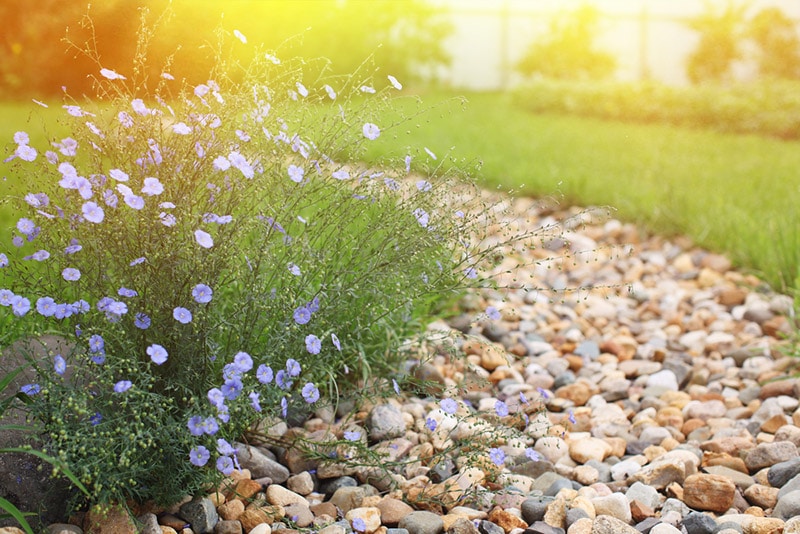
A dry creek bed is a stone arrangement that helps manage rainwater runoff while shielding the soil from the elements. The rocks help shuttle accumulated water to an area where it can soak into the ground.
An attractive landscaping element, dry creek beds offer long-lasting erosion control and hassle-free maintenance. For a beautifying enhancement, you can line the rocks with your favorite plants. End it at a rain garden to absorb the incoming water and create a unified landscaping feature.
6. French Drain

A French drain is an underground gutter system with a perforated pipe that moves runoff to a drainage site. To install a drain, you’ll dig a trench and line it with a gravel layer and a landscaping fabric lining. The perforated drain tube, either a flexible plastic or rigid PVC pipe, runs at a downward angle toward a suitable disposal area.
French drains improve drainage in areas with standing water and prevent erosion by changing where the water flows. Since they sit under the ground, they are an unobtrusive option for protecting foundations and managing water in gardens.
7. Stepped Terraces and Retaining Walls
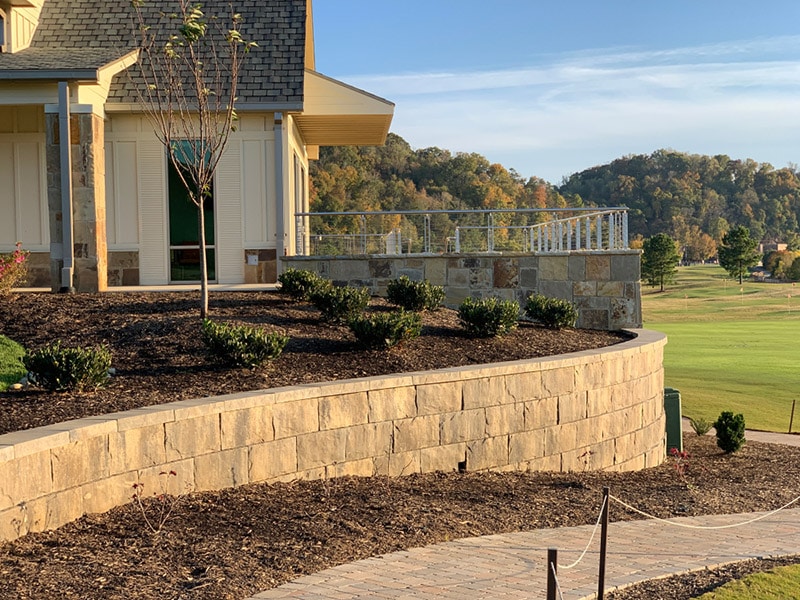
A retaining wall is a support that stabilizes raised land behind it, decreasing an aggressive slope’s angle. You can make retaining walls from brick, loose stone, poured concrete, and timbers.
For long sloping stretches, you may need to add several successive retaining walls for a terraced layout. Once in place, flatter sections will be more suitable for planting. Vegetation will improve the look of your yard while setting roots to hold the soil in place.
What to Consider for Erosion Control
Soil quality and other landscape characteristics will determine the best way to stop erosion in your yard.
- Slope angle: Slopes steeper than a 1:2 rise to run aren’t ideal for mulch and loose covers
- Soil: Soil depth, density, and quality will help you weigh your options for planting
- Erosion intensity: Areas with light erosion may only need plants and mulch. Heavy erosion could need retaining walls
- Foot traffic: For areas with heavy foot traffic, stones work well for preventing erosion, as does aerating the soil to avoid compaction
You may also have goals for the look that make certain plants and landscaping features more desirable. Plan how you can irrigate plants wherever you need them, and determine if they will have adequate sunlight and soil fertility.
Final Thoughts
A well-kept backyard is a point of pride for many homeowners. When erosion sets in, watching your hard work go to waste can be disheartening, and the long-term damage to the soil quality won’t be easy to fix if you allow it to worsen. Prevention is critical. As you’ll find with these tips to stop erosion in your yard, maintaining your landscaping can also be an opportunity to make your property look even better.
Featured Image Credit: fotobycam, Shutterstock
Contents


